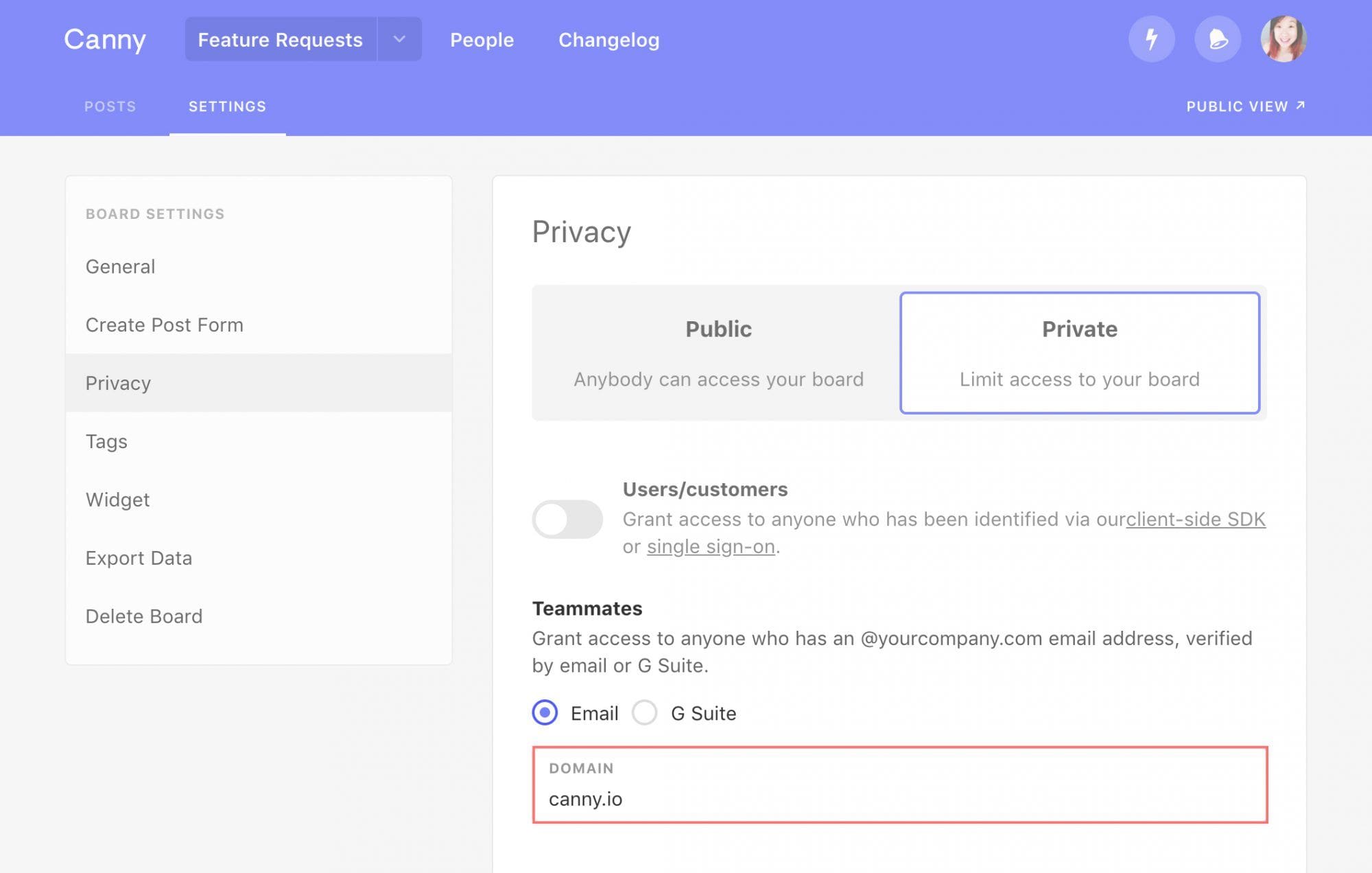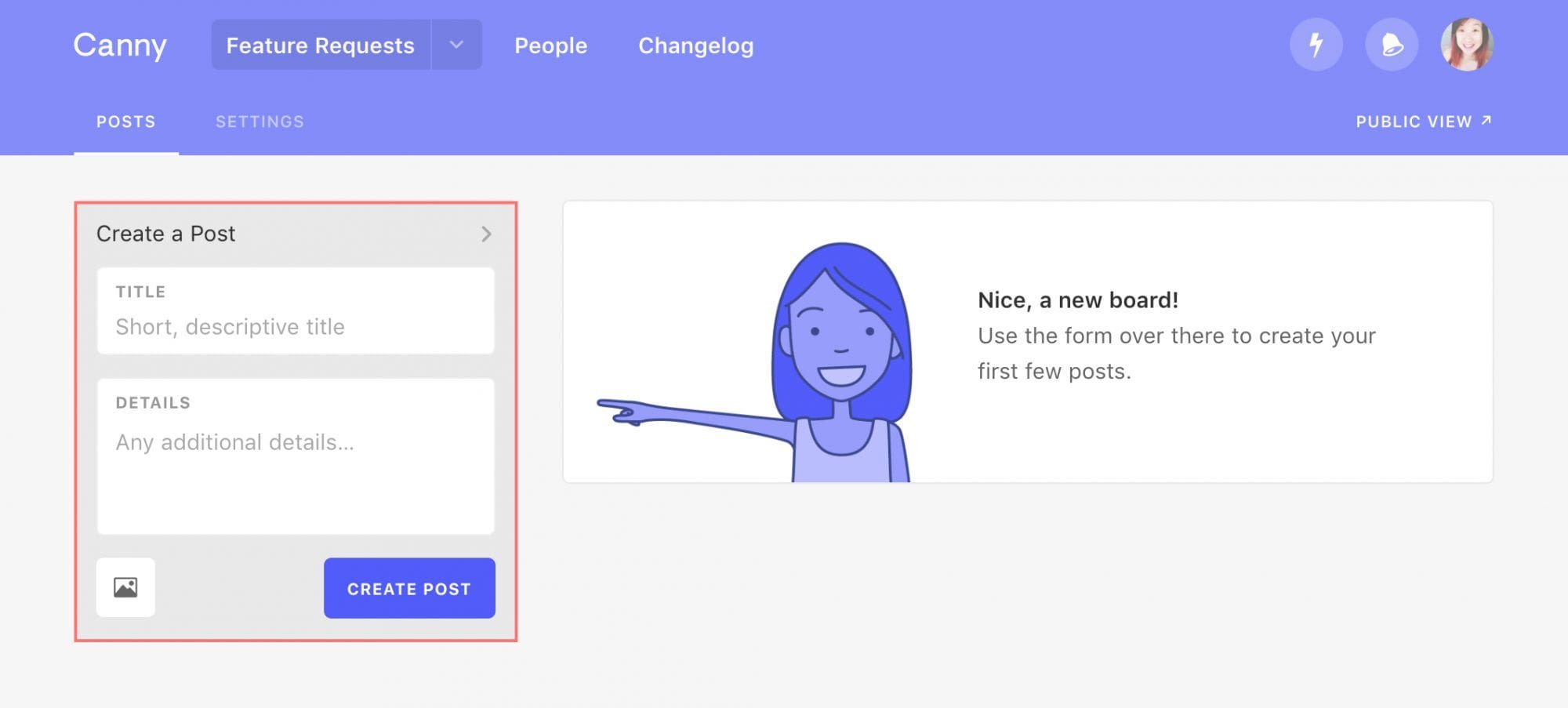If your team has more than 50 people, it’s likely that silos of information and knowledge are forming. Marketing and sales aren’t in touch with product or vice versa. Even within the product org, product teams don’t know what’s going on outside their own domains.
When it comes to giving feedback, people feel left out and unheard. Feedback is exchanged in one-on-one conversations in the hall or in Slack. Usually, there’s no conclusion or action plan.

It’s no surprise, product managers have a lot on their plates. They’re not going to constantly divert their attention to absorb feedback. More meetings? No, thank you.
However, listening to your teammates is just as important as listening to your customers. Having feedback all in one place is key for product managers to actually take advantage of it.
Many teams on Canny use it internally. We did a case study with Bench Accounting that revealed how Canny was able to build a culture around product feedback.
People don’t think of Canny as a software tool, they think of it as their voice. It’s their primary channel to get eyes on a problem. It’s baked into the culture in a way that gives people a voice they didn’t have before. That’s the biggest impact Canny’s had.
– Joshua Berkowitz, Head of Product at Bench
Check out the full Bench case study.
Let’s talk about how you can set Canny up for internal feedback. We’ll also go over pitching Canny to your teammates.
Set up
Setting Canny up for internal use is easy. Our goal here is to make sure external customers can’t see or access the internal board.
Method #1: Using your Canny subdomain
Every company on Canny has a subdomain (https://yourcompany.canny.io). Using your subdomain is the easiest way to get started on Canny.
All you need to do is adjust your board settings to “Private”. Under “Specific emails by domain”, you can whitelist your email domains. For us, that would be @blog3.canny.io. That way, only people with @blog3.canny.io emails can access our board.

Once you have your board(s) set up, you just need to share your Canny link with the team. If they sign up with the email address you’ve added to the whitelist, they’ll be able to see the boards.
Method #2: Using the Canny widget
The widget is a great option if the teammates you want feedback from are using a shared interface. Embedding a Canny widget means they wouldn’t have to leave their main tool.
With the widget, you control who can access your boards. Make sure you embed it on a page that only your teammates can access.
Seed your boards
Regardless of the setup method you choose, you’ll want to seed your boards. Think about feedback you’ve heard recently and create some initial posts.

Also consider inviting some product managers to add theirs.
This is a simple way to show off your new feedback system. You’ll want your teammates to automatically understand what you’re trying to achieve with Canny.
Once you have a great starting point, you’re ready to announce Canny to your wider team.
Announcing Canny
The main challenge here is to get your teammates onboard with using Canny. It can be difficult to change their existing habits and workflows. The best thing you can do is communicate the benefits of using Canny:
Stop losing track of feedback
Say you have feedback about something in your team’s product. First, you need to find the right person to talk to. Then, you catch them in person or message them on Slack. You’re depending on them to internalize the feedback and do something about it. More often than not, they go about their day and your feedback is lost.

This cycle leads to you not giving feedback anymore.
With Canny, all feedback is fair game. Your idea gets written down and preserved for others to see. You add your idea to the Canny board and other teammates can vote on it if they agree. Anyone can chime in to give additional context or thoughts.
Having everything in one place helps the product team understand all feedback at a glance. Communicate to your teammates that Canny is the best place to get visibility on feedback.
Build transparency into product decisions
As your product org grows, it becomes opaque. Feedback being sent via email is essentially sending it into a black hole. Product managers don’t want to be that person that says “no” all the time. People not working in product don’t understand why certain decisions are being made.
“Commit to making it feel like people are listening and acting on it. Canny is such a low-cost way of doing that, it seems like a no-brainer.”
Canny helps bring everyone into the fold. Everyone can see the status of an idea from ideation to launch. Increasing transparency helps your whole team feel like a cohesive system instead of individual limbs.
Build better products
The product team shouldn’t be working in a vacuum. Everyone on the team has thoughts and opinions on how the product can be better. Break down those silos so you have have a holistic view on how to improve your product.
The product team will be more efficient and focused on impact when they’re fully informed.
“Everyone wants to contribute to the product they’re working on. All you need is an outlet.”
Once you’ve communicated your goals with Canny, your teammates can start adding feedback. We’ve built Canny to be an extremely simple experience for people giving feedback. Over time, you should see popular ideas bubble to the top. You’re well on your way to having a constant high-level view into feedback from your teammates.







